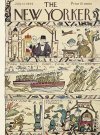For the week that is in it, James Hoban, Kilkenny man (from Callan) who designed the White House and was the supervising architect on the building of the Capital building in DC.
Chaim Herzog, from Portobello in Dublin who became President of Israel. His father spoke fluent Irish and was known as the "Sinn Fein Rabbi"
and lastly, Margaret Eager from Limerick, governess to the children of Tsar Nicholas the second who were all executed by the Communists (she was back in Ireland at that stage)
Chaim Herzog, from Portobello in Dublin who became President of Israel. His father spoke fluent Irish and was known as the "Sinn Fein Rabbi"
and lastly, Margaret Eager from Limerick, governess to the children of Tsar Nicholas the second who were all executed by the Communists (she was back in Ireland at that stage)



/https%3A%2F%2Ftf-cmsv2-smithsonianmag-media.s3.amazonaws.com%2Ffiler_public%2Fc4%2Fa2%2Fc4a27834-0cf0-4f9b-821b-28314beed28d%2Fjulaug2024_c02_prologue.jpg)